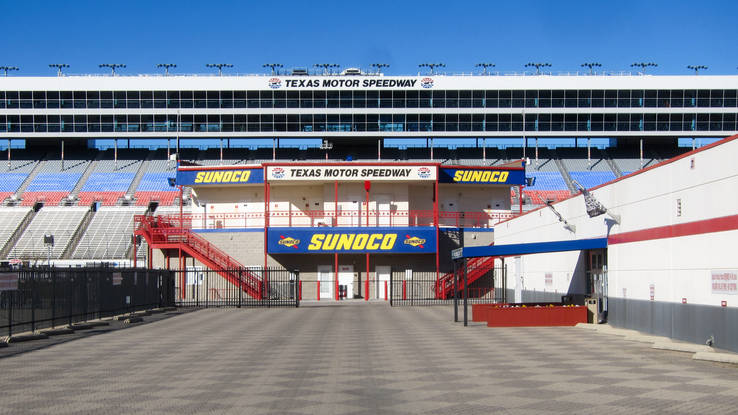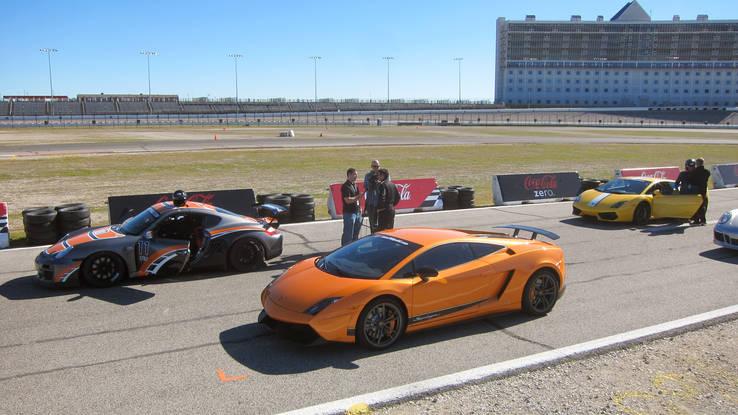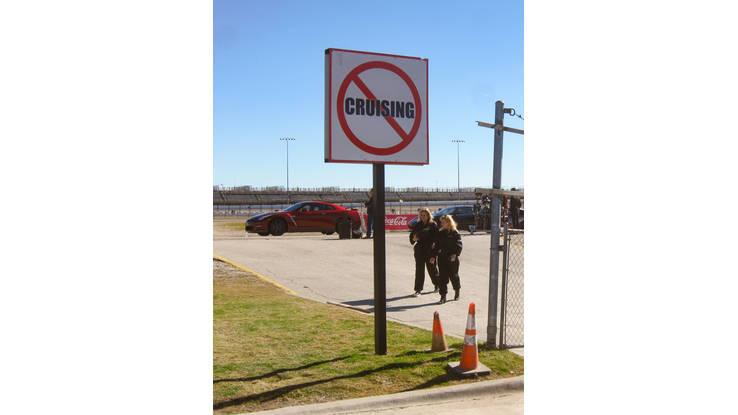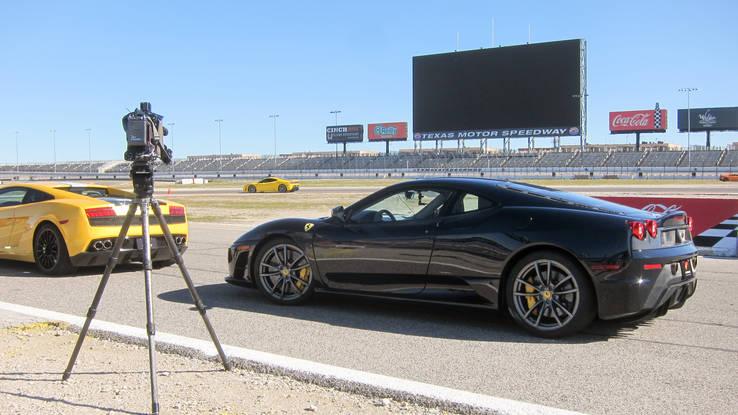Head to Texas Motor Speedway to get into Ferraris and Porsches with Fittipaldi himself
Just how bad is it for the American middle class? Let’s look at a metric that nobody but nobody’s been keeping track of: how long it’d take the average earner to get into an entry-level exotic. The numbers are devastating. In 1986, the median household income in this country was $ 22,742; the base price of a Ferrari 328 GTB, just under $ 60,000. Thirty years later, the first number has tracked with inflation to its current $ 53,657 — effectively stagnating — while the sticker on an equivalent Ferrari, today’s 488 GTB, has quadrupled to a little less than $ 250,000. In other words, the amount of time a typical worker and his or her dependents has to spend living on the street and eating out of garbage cans for the privilege of owning a mid-engined Maranello-built thoroughbred has grown from about three years to about five. Things are tough out there!
One might argue that this is an unfair measure compared to other cost-of-living indices, that while a gallon of milk or a three-bedroom house haven’t changed in three decades, today’s supercars are notably improved, able to run rings around purpose-built race cars just a few years their senior on the track while actually being reasonably usable in day-to-day driving. Still, for you and me and Joe Lunchpail living in service-economy/student-debt/revolving-credit land, the chances of us ever getting a sniff of that performance and tractability have gone from slim to, well, none. So much for the American dream.
The market abhors a vacuum, though, and recent years have seen the growth of “driving experience” ventures offering quick hits in megabucks cars at prices ordinary folk can afford (assuming they’re that part of the 99 percent in a position to piss away a few hundred bucks on a Lambo ride). Rather than sending a jaded automotive journalist to find out whether or not such a thing could possibly be worth it, Autoweek sent me, a jaded touring musician whose only whiff of track time has come behind the wheel of a go-kart, and whose lifetime experience driving Ferraris is limited to one built 45 years ago.

Fittipaldi Exotic Driving
“Most of our customers are what I call experience junkies,” says Bill Scott, who with Christian Fittipaldi has just launched the Texas-based Fittipaldi Exotic Driving. For such people, piloting a supercar on a track is a bucket-list item alongside jumping out of a plane or maybe climbing into one of those “Shark Week” cages. A quick glance at the fleet of cars on offer at Texas Motor Speedway on a recent morning, though, suggests that Scott, who spent 20 years working with Richard Petty, is a car guy first and experience-peddler second. Rather than a portfolio of the newest and flashiest, FED’s stable leans heavily toward hardcore track specials.
“Of course, for something like this, you need a Ferrari, you need a Lamborghini, you need a Porsche,” Scott says. But instead of a 488 or 458 Italia (“We had one,” Scott tells me, shaking his head. “It spent more time in the shop than it did on the track.”), here are a pair of 430 Scuderias, the track-weapon variant of the late F430 that’s only become more prized since being succeeded by the 458 in 2010. Likewise, house Lamborghinis are Superleggera and Balboni editions of the familiar Gallardo, cars set up from the factory for track duty. A Porsche 911 Carrera S and Nissan GT-R Black Edition round out the range of options.
A quick classroom briefing is followed by a couple crew-cab pickup laps around the 1.4-mile infield course, an instructor helpfully pointing out the cones denoting braking points and apexes along the way. “Most places just show you a video of the track,” Scott points out. I was kind of hoping we might get to walk it, Jackie Stewart-style — you know, to really assess the fine grain of the track conditions — but yeah, warm-up laps are good, too.

Fittipaldi Exotic Driving
With startling little ceremony, my turn is up. Plopping down behind the wheel of the midnight-blue Scuderia, I exchange pleasantries with Andy, my all-business right-seat guide. As a guy whose job is talking fools through their first encounters with 500-hp supercars, his gruff demeanor makes sense. I quickly resolve to shut off my brain and do as I’m told.
Pulling a paddle to engage first — my first dual-clutch experience will be in automatic mode, alas, but given how much else is going on here, that’s going to be just fine — I dip a toe in the water and, at Andy’s urging, accelerate smartly down the front straight. No doubt the Ferrari’s flat-plane crankshaft V8 is making an unholy howl at this point, but I couldn’t actually tell you as all I have time to focus on is a rapidly approaching series of cones and the voice in my helmet telling me to brake for the first corner. Rolling of the throttle, adding in steering, aim for the cone — thanks, Andy. I’m starting to get the hang of this now, of listening, anyway. Timidly track through the back esses. A decreasing-radius right deposits us on a short straight before a quick sweeper past the start-finish line. “Go, go, go!” Andy shouts, and I gratefully comply.
You’ll notice there hasn’t been much said about the car to this point. The car that — were I a paying customer — would presumably be the whole point of the exercise. That’s because 100 percent of my attention is focused on following instructions and getting the line right. Are those experience junkies as concerned with not screwing up as I am? No way of knowing. About halfway through my second lap, though, I find myself leaning into the car as I learn to trust Andy more fully, and putting together a series of turns that feels moderately fluid. We blow past a slower car heading onto the front straight, and this time I’m briefly able to enjoy the rush of a Ferrari at full tilt on a racetrack. Are those LEDs lighting up on the steering wheel? They are! I’ll be damned.

Fittipaldi Exotic Driving
Coming out of turn one, I feel the suspension load up and savor the sensation of the Pirelli Corsas using some fraction of their considerable grip. Of course, the reason I’m feeling this is that I’ve held the steering angle constant and completely failed to follow the line out of the turn, which leaves me set up all wrong for the coming esses, a fact Andy notes evenly. There’s a sort of uncertainty principle at work here, it seems: I can focus on the car or I can focus on the track, but I’m a long way from being able to pay attention to both. I finish my laps without incident and cruise back into the staging line, wishing I could stay out for about four more hours.
Verdict: cool, worthwhile, but slightly anti-climatic and not exactly perception-altering. It’s what comes next that succeeds in resetting my reality, as I climb into FED’s other car, a gutted and fully caged Porsche Cayman bored out to 3.9 liters and running on slicks. Behind the wheel is Christian Fittipaldi, defending United SportsCar Championship champ for two years running, two-time winner of the 24 Hours of Daytona, a guy who’s competed in everything from Formula One to NASCAR and was once named Indianapolis 500 Rookie of the Year. “So, they told you about how you’re supposed to slow down when you get to the cones, right?” I ask him. He shoots me a quizzical look.
Seconds later, Fittipaldi isn’t so much sailing past those cones as full-throttle accelerating through them before standing the car on its nose and diving towards the apex. The amount of speed he carries through the corners that follow is just unreal, and unlike anything I’ve ever experienced. I cackle like a madman the entire time. Pulling back in after a couple laps I attempt to collect myself. “Horsepower?” Fittipaldi shrugs. “About 400,” he says, adding, “This is basically an entry-level race car.” OK, fine. It is clearly not being driven by an entry-level driver.

Fittipaldi Exotic Driving
It’s worth noting that Fittipaldi hasn’t just lent his name to the business; he’s both co-owner with Scott and an active participant, even if he won’t always be on hand to provide IMSA-caliber thrill-rides. “It’s so easy to stay in your cocoon,” he tells me later, and one gets the sense the cocoon in question is a metaphorical one, and not that of a Daytona prototype. “For me, this is a way to make new connections, create new opportunities, to really do something cool,” he says, with a guilelessness that’s genuinely disarming. A professional race car driver who wants to get out and meet people? What’s next?
Unlike similar outfits that travel the country hitting a given location maybe twice a year, FED is restricting its territory to Texas for the time being, enabling them to make monthly stops at TMS in Dallas, Driveway Austin, and their home base at MSR Houston.
Is it worth it? Sure. Tell your thrill-seeking friends looking to impress their Instagram feeds to head to Texas Motor Speedway: they won’t find a more professionally run program or a better experience. If you’re an enthusiast curious to drink from the forbidden chalice of modern automotive exotica, though, skip TMS for Austin or Houston (what they lack in Temple of Motorsport grandeur they make up for with longer and more challenging tracks), and maybe look into getting some track instruction in lesser (and less expensive) machinery beforehand, so that when you do get out there in your dream ride, you might be able to more fully appreciate it.
Finally, if offered a ride with Christian Fittipaldi? Say yes.



























